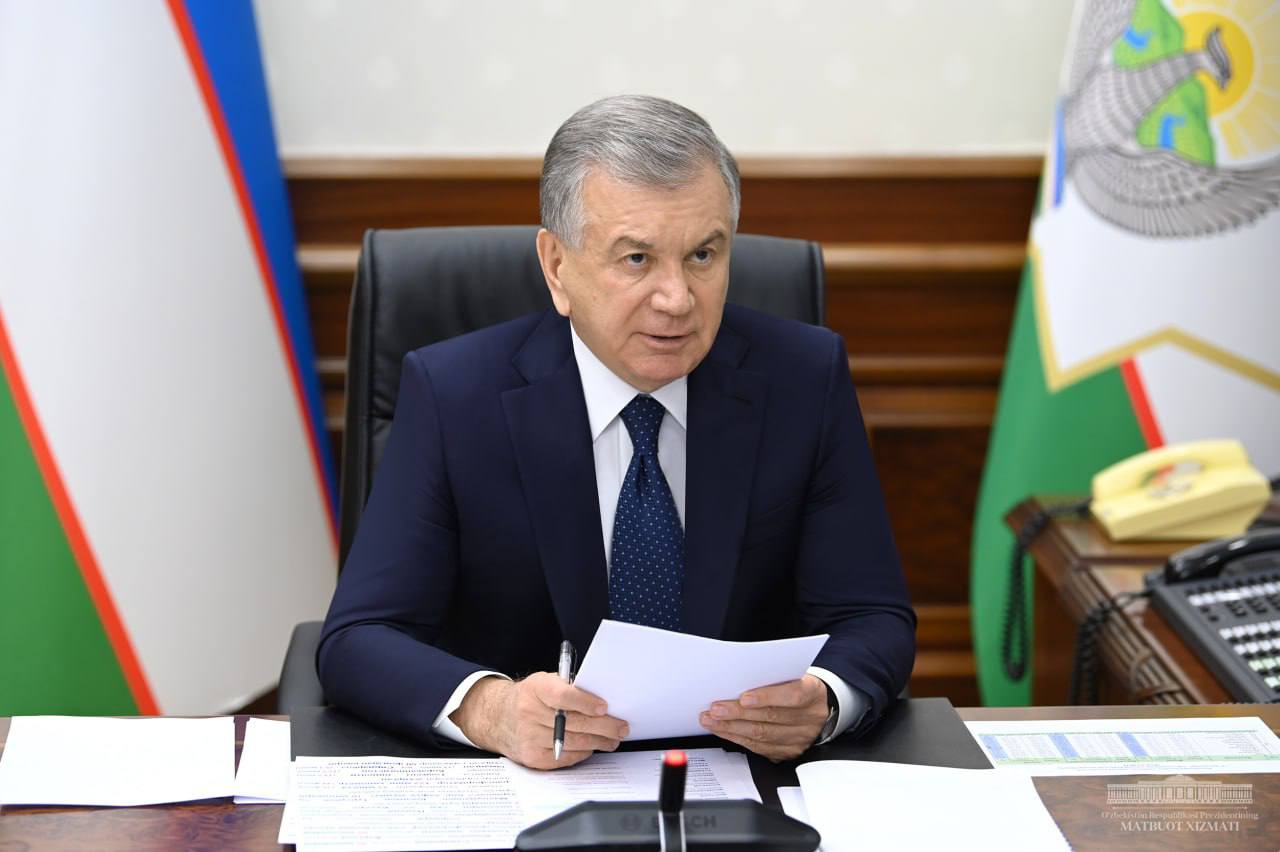On December 12, under the presidency of Shavkat Mirziyoyev, measures to further improve the system of raw cotton procurement were discussed.
During a videoconference chaired by the Head of State on November 9 this year, the existing problems in the cotton industry were analyzed and the need to organize relations between clusters and farmers and cotton seed production on the basis of new approaches was emphasized.
Proposals developed in accordance with these instructions were examined at today’s meeting.
In particular, from the 2024 harvest onwards, relations between raw cotton producers and cotton textile clusters will be based on a new procedure.
Before sowing, farmers and clusters in the same region will enter into futures contracts for cotton procurement in the “Cotton Raw Materials Section” of the Commodity and Raw Materials Exchange, which will conduct separate trading for each region based on soil fertility indicators.
The process involves the farmer placing the quantity of cotton on the exchange and entering into a futures contract with the cluster in their region that offers a higher price. The starting price is based on the average price of cotton fibre on the New York Stock Exchange over the last 12 months.
Farmers can sell the quantity of cotton harvested in excess of the futures contract, as well as the primary and secondary products derived from the raw material, directly to the cluster with which the futures contract is entered into, or to any other entity on the exchange.
In the case of farmers who grow cotton raw materials with their own funds, including commercial loans, the cotton raw materials and the primary and secondary products obtained from them may be freely sold on the Exchange.
The importance of organizing training seminars for farms growing raw cotton regarding participation in exchange trading was discussed. It was agreed that clusters and other enterprises will accept cotton raw materials only through electronic scales and implement an automated accounting system for cotton fibre.
Starting from the 2024 harvest, a new system of allocating loans from the Agricultural Support Fund to farmers and clusters for the cultivation of raw cotton and final settlements will be implemented.
When implementing agro-technical measures with the allocated loans, suppliers of goods, works and services, including material resources, will be chosen independently by farms and clusters.
Credit applications will be submitted entirely in electronic form.
The need to update the cotton textile cluster organization was highlighted at the meeting.
Those wishing to form a cluster will have to establish at least two stages of textile production and not be in arrears with tax and compulsory payments, as well as bank loans.
The Republican Commission for the Coordination of the Activities of Cotton-Textile Clusters will be dissolved and applicants wishing to organize cluster activities will be selected on the basis of an open and transparent online competition.
The Ministry of Agriculture will maintain a register of clusters and publish it regularly on its website. The Ministry has been tasked to develop a programme for the automated evaluation of clusters based on key efficiency indicators.
The issues of seed production and increasing cotton yields were discussed at the meeting.
The President’s resolution, which was drafted for this purpose, envisages allowing the planting of foreign varieties of cotton on 10 % of cotton fields as an experiment from next year.
In addition, high-yielding local and foreign varieties will be planted on an experimental basis in areas with low soil fertility and difficult water supply in 14 districts.
The importance of introducing special agro-technical and simplified quarantine requirements for imported cotton varieties, as well as growing these varieties under special quarantine control and based on the scientific recommendations of the Cotton Council, was highlighted.
Cotton clusters and farms will be free to grow cotton varieties, but in accordance with guaranteed seed reserves.
Several tasks are defined to stimulate the creation of new productive and industrial cotton varieties in the country.
In particular, clusters and farmers will be allowed to become co-authors of the cotton variety in question during the development of promising local cotton varieties, the production of high-quality elite seed and the marketing of the variety. A gradual transfer of certified seed procurement to clusters and private seed companies is planned.
From 2024, varieties with yields below 30 centners will be regularly identified and replaced with high-yielding domestic and foreign varieties.
The Ministry of Agriculture has been tasked with developing a mechanism for implementing this system and transforming the activities of the Seed Production Centre.
As Uzbekistan does not have a specialized institution for fibre crops, fibre production and the cotton industry, it has been proposed to establish a Fibre Crops Research Institute based on the scientific research organisation “Paxtasanoat Ilmiy Markazi” (Cotton Industry Scientific Centre).
In addition, scientific expertise on the safety of genetically modified organisms (GMOs) and their processed products will be introduced in our country, and a national database of genetically modified varieties will be established. This will enable the safety of domestic and imported GMO products to be assessed and information on GMO products to be analysed.
By the end of 2024, the “e-urug” platform will be launched as part of the digitalization of the industry. This will provide opportunities for the integration of seed-producing companies and farms, obtaining information on seed supply and reserves, their suitability for specific regions, agrotechnology, and the free and transparent placement, redistribution and certification of seed for varieties and hybrids.
The President approved these proposals and issued a series of instructions for the implementation of the new system.
